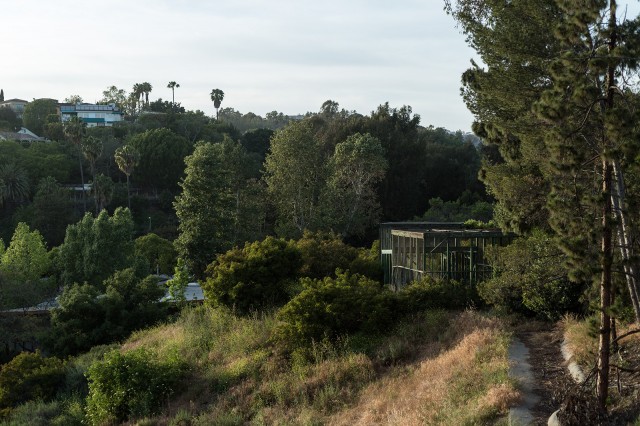Native flora and fauna have become an increasingly rare sight within heavily urban communities. In cities, both flora and fauna communities frequently show drastically altered species composition, abundance, and richness, among other characteristics. In Los Angeles, one of the densest urban corridors in the United States, Sage Hill is a unique plot of land located in the northwestern corner of the University of California, Los Angeles (UCLA) campus. Sage Hill is particularly important because it represents the last remaining patch of native flora and fauna in West Los Angeles south of Sunset Boulevard. The area is 3.5 acres and supports an impressive level of biodiversity, including 30 bird species, 7 mammal species, and over 100 insect species. A variety of plants are also present, including native bunchgrasses, oaks, and sycamore trees.
Our practicum project will develop a strategic plan to transform and manage Sage Hill as a natural area that supports outdoor active learning and undergraduate research in environmental science and beyond. We will plan for three zones: an urban teaching zone, a restoration zone, and an outdoor laboratory zone. The urban teaching zone will be an area where UCLA students can learn more about the site’s biodiversity, practice field sampling methods, and learn about the long history of the relationships between humans, plants and animals. The outdoor laboratory zone will also be used by students and faculty to perform independent research projects and experiments. The restoration zone will be an area where native plants will be replanted with close attention to ecosystem function and potential climate change scenarios. Our goal for this project is to create a multi-use, healthy native ecosystem that can be used by UCLA students and faculty for teaching, learning, and research purposes.
Client: UCLA Institute of the Environment and Sustainability
Advisor: Dr. Cully Nordby
Project Team: Isabel Gandarilla Arlene Tieu Maggie Elgin Maya Canapary Ziyaad Qureshi
Image: Petek Kuscu/Daily Bruin

